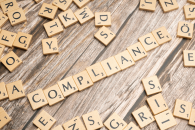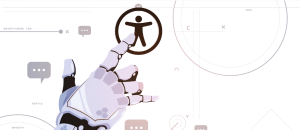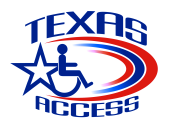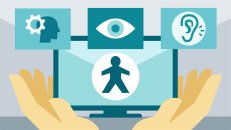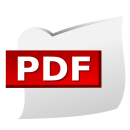What is ATAG 2.0?
The Authoring Tools Accessibility Guidelines (ATAG) 2.0 outlines standards to guide developers of web authoring tools in making their software more accessible to all authors, including those with disabilities.
‘Authors’ refer to web developers, designers, and writers who create content for online end-users and other authors. Authoring tools are the software and services they use to create web content, such as static web pages, dynamic web applications, etc.
These tools include:
- Source-code editors
- Multimedia authoring tools
- Software for creating mobile web applications.
- Web page authoring tools
- Software for creating websites
- Software that converts to web content technologies
- Content websites like blogs, wikis, online forums, photo-sharing, and social networking sites.
Who is ATAG meant for?
ATAG 2.0 serves a dual purpose:
- to help authors create more accessible web content that conforms to Web Content Accessibility Guidelines (WCAG 2.0 Level AA).
- to make the authoring tools themselves accessible so that people with disabilities can create web content.
Business managers and policymakers also benefit from ATAG 2.0 as it provides a yardstick to evaluate how accessible a vendor’s authoring tool is and whether it produces accessible content.
ATAG 2.0 also meets the needs of people who want to encourage their existing authoring tool developers to improve accessibility in future versions.
What is in ATAG 2.0
ATAG 2.0 has two main parts:
- Part A focuses on rules to make the authoring tool itself accessible.
- Part B focuses on how the authoring tool should help authors create accessible content.
Part A: Make the authoring tool user interface accessible
The guidelines under this section ensure that the authoring tool displays the web content edited in a way that is more accessible to authors with disabilities.
It contains four main principles, each with accompanying guidelines to provide a framework for compliance.
Principle A1: The authoring tool user interface follows applicable accessibility guidelines.
- Guideline 1: Ensure that web-based functionality is accessible
Its purpose – To ensure fully or partially web-based authoring tool user interfaces are more accessible to authors with disabilities.
- Guideline 2: Ensure that non-web-based functionality is accessible
Its purpose – To guarantee that non-web-based authoring tool user interfaces are more accessible to authors with disabilities who use accessibility features on assistive technologies to communicate with the software.
Principle A2: Editing views are perceivable
- Guideline 1: Make alternative content available to authors
Its purpose – To enable authors with disabilities to access and interact with alternative content within the edited web content to easily navigate and arrange them.
- Guideline 2: Ensure that editing-view presentation can be programmatically determined
Its purpose – To ensure that if the authoring tool changes the display of the web content being edited, authors will disabilities who use assistive technologies can access status messages about these changes in the same way as non-disabled authors.
Principle A3: Editing views are operable
- Guideline 1: Provide keyboard access to authoring features
Its purpose– To ensure that authors with disabilities can operate almost all functionalities in the authoring tool using a keyboard; or an assistive technology that uses a keyboard interface, such as onscreen scanning keyboards and voice recognition systems.
- Guideline 2: Provide authors with enough time
Its purpose – To allow authors with visual, mobile, and cognitive disabilities who may take longer to complete their authoring tasks to save or continue their work without time restrictions.
- Guideline 3: Help authors avoid flashing content that could cause seizures
Its purpose – To guarantee that authors with photosensitivity safely access visual content (such as videos and animations) without the risk of triggering a seizure attack.
- Guideline 4: Enhance navigation and editing via content structure
Its purpose – To help authors with disabilities who depend solely on the keyboard better navigate web content using its structure.
- Guideline 5: Provide text search of the content
Its purpose – To assist authors with difficulties typing or operating the mouse efficiently to find the web content they wish to edit.
- Guideline 6: Allow users to manage preference settings
Its purpose – To allow authors to set their display settings when editing web content without changing how the content will be displayed when it is eventually published.
- Guideline 7: Ensure that previews are at least as accessible as user agents
Its purpose – To ensure that the authoring tool provides preview features that allow authors with disabilities to check their work and how it would be displayed to end users.
Principle A4: Editing views are understandable.
- Guideline 1: Help authors avoid and correct mistakes
Its purpose – To help authors with disabilities (such as those that affect fine movement and speech) avoid serious consequences due to mistakes made while using the authoring tool.
- Guideline 2: Document the user interface, including all accessibility features
Its purpose – To allow authors with disabilities who need to use the accessibility features of the authoring tool user interface to easily find descriptions of how to use such features.
Part B: Support the production of accessible content
The guidelines under this section only apply to the default authoring tool, excluding modifications from third-party plug-ins, user-defined templates, or user modifications of the tool’s default settings.
Principle B1: Fully automatic processes produce accessible content.
- Guideline 1: Ensure that automatically-specified content is accessible
Its purpose – To ensure that web content published directly to end users conform to WCAG 2.1 and is accessible by default.
- Guideline 2: Ensure that accessibility information is preserved
Purpose – To ensure that authoring tools store previous accessibility information even after restructuring or recoding. It also helps authors easily detect when this does not happen.
Principle B2: Authors are supported in producing accessible content.
- Guideline 1: Ensure that accessible content production is possible
Its purpose – To encourage authors who can use an authoring tool to create more accessible content to do so without any restrictions caused by the authoring tool.
- Guideline 2: Guide authors to produce accessible content
Its purpose – To reduce the need for mitigation and repair of accessibility problems by guiding authors from the outset on how to create and maintain accessible web content.
- Guideline 3: Assist authors with managing alternative content for non-text content
Its purpose – To ensure that authors can add alternative content for non-text content and modify that alternative content in the future.
- Guideline 4: Assist authors with accessible templates
Its purpose – To reduce the likelihood of authors using inaccessible templates to create web content because accessible templates do not exist.
- Guideline 5: Assist authors with accessible pre-authored content
Purpose – Same as with Guideline 4.
Principle B3: Authors are supported in improving the accessibility of existing content.
- Guideline 1: Assist authors in checking for accessibility problems
Its purpose – To alert authors to web content accessibility problems during the authoring process, so they can be immediately addressed before publishing to end-users.
- Guideline 2: Assist authors in repairing accessibility problems.
Its purpose – To support authors in repairing content accessibility problems detected via the checking system in the authoring tools. This greatly enhances the utility of checking and increases the likelihood that authors will properly address web content accessibility problems.
Principle B4: Authoring tools promote and integrate their accessibility features.
- Guideline 1: Ensure the availability of features that support the production of accessible content
Its purpose – To ensure that authors perceive the accessible content support features as a natural and expected part of the authoring tool workflow, same as the features for addressing spelling, grammar, and syntax errors.
- Guideline 2: Ensure that documentation promotes the production of accessible content
Its purpose – To help authors adopt accessible authoring practices as a norm and reduce the chance that they will copy inaccessible practices from examples in the documentation.
Conclusion
ATAG 2.0 is a World Wide Web Consortium (W3C) Recommendation. This means it has undergone public comments, reviews, and extensive testing before being approved by the W3C membership.
Therefore, all authoring tools must be accessible. In turn, they should enable and support all authors – including those with disabilities or who use assistive technologies – to create, customize, publish, and maintain accessible content.
By following the ATAG 2.0 recommendations, authors increase their chances of creating a more seamless product and become more receptive to new accessibility-related authoring requirements.

